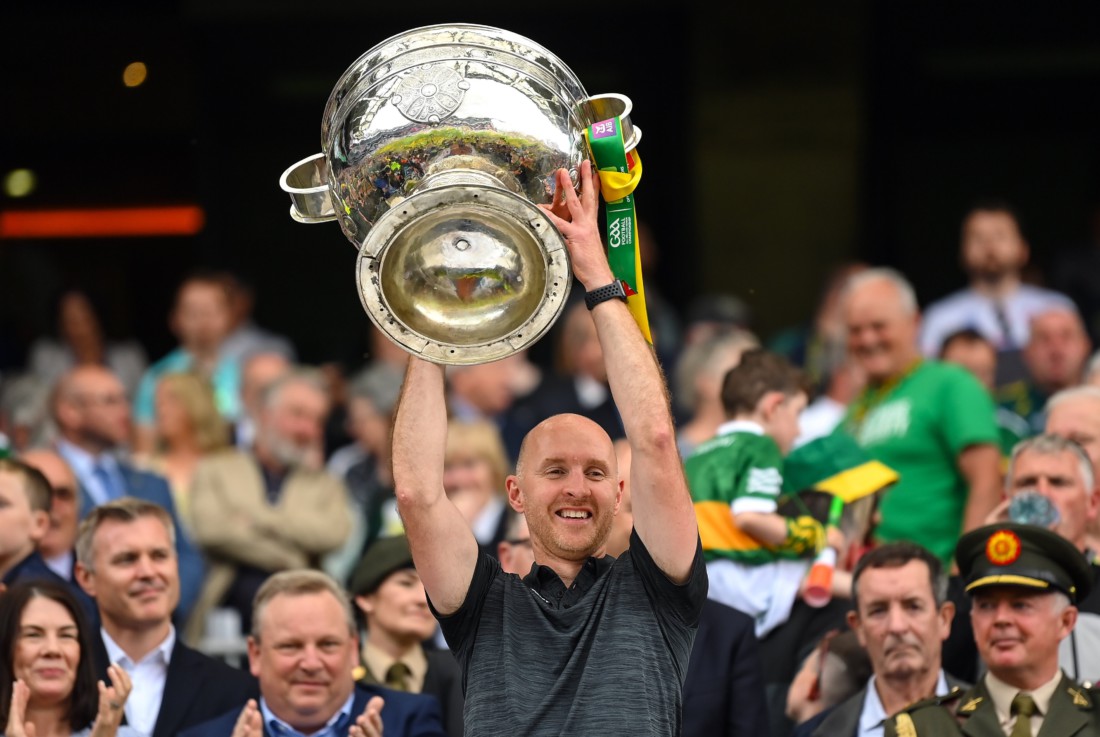A FEW weeks back, John Harrington of GAA.ie interviewed me for a piece in the All-Ireland semi-final programme.
It centered around how Gaelic Football has evolved over the last five years and how the sport is gathering pace both on and off the playing field. There’s S & C, nutrition, GPS, video analysis, performance coaches, transition play, kick out strategies, defensive structures, offensive set plays, and that’s without mentioning the superstars of the game (none more so than Walsh and Clifford in this year’s final). The game has it all.
Gaining possession of the football and scoring more than the opposition is the primary objective in Gaelic Football, but there are so many ways to achieve these objectives now. Over 60 per cent of scores in Gaelic Football now come from turnovers (that includes turnover ball from either a misplaced pass or a successful tackle, opposition kick outs, and shots by the opposition that have dropped short).
To force a turnover, you obviously need effective tackling and effective tacklers, a skill that can certainly be improved through coaching. Kerry and Galway have most certainly tidied up their art of tackling over the last 12-18 months so it’s no coincidence they contested this year’s final.
Obviously where you decide to tackle the opposition can be strategic. A lot of teams now are setting traps for the opposition, for example conceding a kick out, and smart effective tacklers in the forward line are doing what Dublin did best for years, channeling the defender close to the sideline and then double teaming and coming around the blindside and using the sideline as an extra defender.
Effective tacklers are not just your defenders anymore and the inside forwards now set the tone. Your attackers are the first line of your defence, and a huge amount of it comes down to industry and the ability of the players to repetitively be able to track back and make those tackles. That relies on mammoth amounts of physical conditioning.
There is not just a huge focus on the training field now on an individual’s tackling technique but how your team is going to implement a tackling game-plan as a collective.
This is where communication is so important. It’s about sensing the double up and the opportunity to nail a swarm tackle. These might be trigger moments that need quickly identified, like a loose pass, a sloppy bounce, a mistimed solo, a fumble i.e. anything that allows you to go hard after the ball and the opponent.
An effective trigger press doesn’t just require good communication and technique but also a serious amount of energy and effort. Those teams who consistently tackle the most and work the hardest have the tendency to be around come the business end of seasons.
Total Gaelic Football now is simple – the best teams now want defenders who can defend but who are also as savvy going forward and attacking and they want forwards equally who are as comfortable tackling as they are swinging over a score.
Attacking and defending as a unit is the clear common goal of every team, and to do it consistently for 70+ minutes takes a huge level of physical effort, hence why the top teams are so well conditioned physically.
Iin fact it is certainly what separates the big guns from the rest. If you looked at the earlier rounds of the championship for example, Dublin v Wexford, Kerry v Cork, Tyrone v Fermanagh, Monaghan v Down, teams who are Division One against teams who are playing in division Three and Four had a relatively tight opening half and then comfortably steam rolled the second half. Yes of course they might have better players etc, but conditioning levels are three to four levels above that of their opponents.
That transition from defence to attack and attack to defence is a real mindset switch that needs consistently worked on in training. The ability to switch mid-game between the two requires so much speed – that speed of thought, speed of play, speed of decision making. You can obviously also make those decisions more consistently and efficiently when you are in good physical and mental shape.
Transitioning for teams can be made easy. When you win the ball you want to make the pitch as big as possible, getting height, depth and width to your play coupled with pace and power. Having mobility in your team is critical for this, so you can ask questions of the opposition all over the field. Then when you lose the ball, you make the pitch as small as possible, getting numbers goal side, being compact and defending as a unit!
The great Dublin six in a row team were excellent at this, probably creating the biggest illusion ever in the game by convincing everyone they weren’t defensive. They were easily one of the most defensive teams to play the game but what separated them was their unique ability to transition forward with great flair, athleticism, and numbers.
Kerry have taken on the mantle this year. The champions with the deployment of Paddy Tally all the way from Tyrone have added that steeliness defensively because they unquestionably have the offensive power in abundance.
Galway uover the last two seasons under Pádraic Joyce have also figured it out and are getting closer,. They cantered to a Connacht title due to the defensive naivety of Mayo and Roscommon and under John Divilly’s coaching have become so much better defensively. What’s maybe missing from lifting Sam is a change in goalkeeper and a real young scoring threat or two from the bench. The secret to success, probably like all things in life, is a little balance.
Receive quality journalism wherever you are, on any device. Keep up to date from the comfort of your own home with a digital subscription.
Any time | Any place | Anywhere












